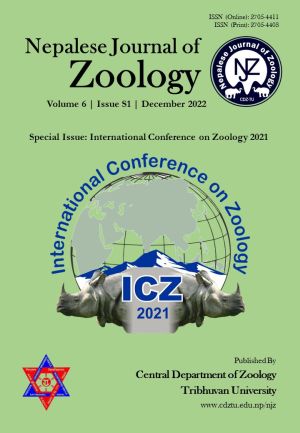Diversity, distribution and medical significance of Gazalina species (Lepidoptera: Notodontidae) in Nepal
DOI:
https://doi.org/10.3126/njz.v6iS1.50529Keywords:
Ecology; Habitat; Phenology; Processionary; TaxonomyAbstract
Except for their taxonomy, distribution and ecology, little research has been done on toxic moths. Gazalina species (Family: Notodontidae, Subfamily: Thaumetopoeinae) reported in Nepal has toxic hairs that cause severe infection when they come into contact with human eyes. Three species of Gazalina have been recorded in Nepal which includes G. chrysolopha, G. apsara and G. transversa. Of them, G. chrysolopha is a widespread and common species, which can be observed attracted to white lights. The distribution range of these moths, as well as their habitat preferences and life stage phenology, is still poorly understood. The distribution of Gazalina chrysolopha has so far been restricted to the mid mountain districts, with no recorded information from the Tarai region. These moths begin to appear in the mid of July, with a peak density in September to the first week of October. Few unusual records of this moth have also been made in March and April, which is not a common phenomenon. A detailed study on the distribution, ecology, life stages, and other facts about this moth could be extremely valuable to foresters, entomologists, and professionals involved in ophthalmological research in the country. This study presents updated information of Gazalina species in Nepal based on the field study and previous publications made by a few researchers.
Downloads
Downloads
Published
How to Cite
Issue
Section
License
Copyright (c) 2022 Bhaiya Khanal, Bimal Raj Shrestha

This work is licensed under a Creative Commons Attribution-NonCommercial 4.0 International License.
This license enables reusers to distribute, remix, adapt, and build upon the material in any medium or format for noncommercial purposes only, and only so long as attribution is given to the creator.

